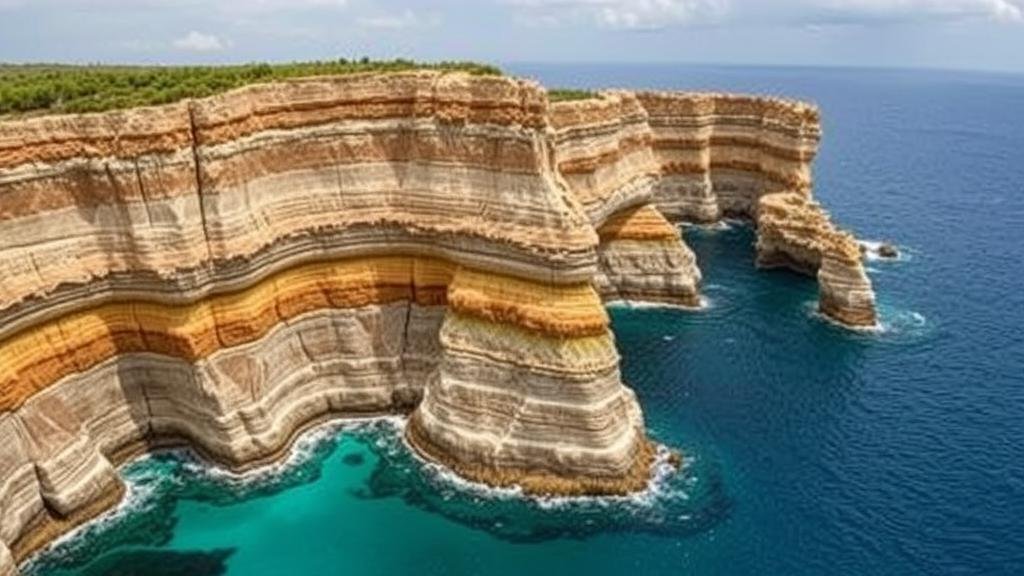Fossil Cliffs: Discovering the Layers of Prehistoric Oceans
Fossil Cliffs: Discovering the Layers of Prehistoric Oceans
For rockhounds and mineral collectors, fossil cliffs offer a breathtaking window into the Earth’s past, revealing layers of prehistoric oceans that are rich with history and biodiversity. These natural formations not only captivate enthusiasts but also provide valuable insights into geological processes that occurred millions of years ago. In this article, we will explore the significance of fossil cliffs, the types of fossils they contain, and practical tips for collectors eager to uncover these geological treasures.
The Significance of Fossil Cliffs
Fossil cliffs serve as natural archives of geological history. Formed from sedimentary rocks like limestone and sandstone, they often display well-preserved fossils that tell stories of ancient marine environments. The study of these cliffs contributes to our understanding of paleoenvironments, evolutionary biology, and even climate change.
For example, the White Cliffs of Dover in England, made primarily of chalk, are estimated to be around 70 million years old and formed from the accumulation of microscopic marine organisms. Such cliffs can provide insights into oceanic conditions during the Cretaceous period, showcasing how ancient seafloor environments evolved over time.
Types of Fossils Found in Fossil Cliffs
Those who venture to fossil cliffs will encounter a wide array of fossil types, including:
- Invertebrates: These include mollusks, corals, and echinoderms, which were once abundant in ancient seas. presence of these fossils indicates the rich biodiversity of past marine environments.
- Vertebrates: Fossilized remains of fish, marine reptiles, and even the occasional dinosaur can be found, providing critical evidence of the evolutionary chain.
- Plant fossils: Imprints of plants like seaweed can be discovered, which help reconstruct ancient coastal ecosystems.
The presence of these fossils is not only a testament to the life that once thrived in these oceans but also indicates the conditions under which they were deposited. Understanding these factors enables collectors to refine their search and enhancement techniques when exploring fossil cliffs.
Exploring Fossil Cliffs: Practical Tips for Collectors
Collecting fossils from cliffs can be rewarding but requires a plan to ensure safety and success. Here are several practical tips for enthusiasts:
- Research Locations: Before heading out, research local fossil cliffs that are known for rich deposits. Websites like the Fossil Society or geology forums can provide valuable information regarding where to find specific types of fossils.
- Safety First: Fossil cliffs can be unstable. Wear appropriate safety gear, and consider taking a partner for added safety. Always be mindful of tides when collecting near coastal areas.
- Use Proper Tools: Tools like rock hammers, chisels, and safety goggles are essential for not only successful collecting but also for protecting yourself while breaking rocks.
- Document Your Findings: Keep a fossil journal that records the location, type of fossil, and any relevant observations. This will help provide context and can enhance your collections in the future.
The Impact of Climate Change on Fossil Cliffs
As global temperatures rise and weather patterns shift, fossil cliffs face erosion and other forms of degradation. According to the U.S. Geological Survey, many coastal cliffs are experiencing increased rates of erosion, threatening the integrity of fossil-rich layers.
For example, in the Pacific Northwest, the combination of rising sea levels and increased rainfall is causing significant damage to coastal cliffs that house crucial paleontological sites. Collectors and researchers alike must recognize the urgency of documenting these sites before they are altered or destroyed by natural processes.
Actionable Takeaways
Fossil cliffs are more than just stunning geological formations; they are valuable educational resources that tell the story of our planet’s history. For rockhounds and mineral collectors, they present unique opportunities to uncover fossils that may be millions of years old. By researching locations, prioritizing safety, using proper tools, and working to preserve these sites, collectors can enjoy the thrill of discovery while contributing to the preservation of our natural heritage.
To wrap up, whether you are an experienced collector or just starting, exploring fossil cliffs can be a rewarding venture that deepens your understanding of both geology and paleontology. So prepare your gear, do your research, and step into the layers of time waiting to be discovered.


